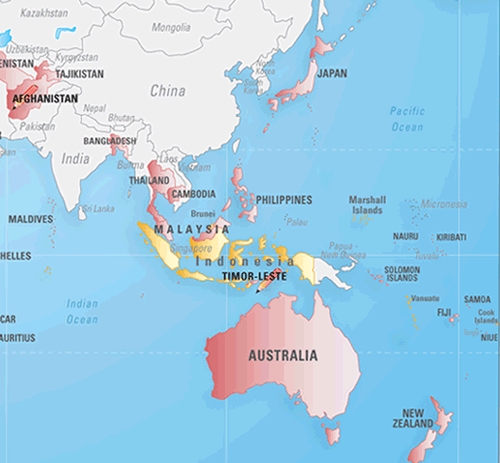Asia- Pacific dominates global business travel , China leads

Washington DC : Business travel in Asia Pacific, led by a dominant China, outpaces the rest of the world, according to a newly released travel forecast by the GBTA Foundation – the education and research arm of the Global Business Travel Association.
Overall, the GBTA BTI Outlook – Annual Global Report & Forecast, sponsored by Visa, Inc. expects global business travel spending to hit a record $1.18 trillion USD in 2014, a 6.9 percent growth over the previous year.
Driven by infrastructure investments, exports and service development, business travel spending in China has grown from $32 billion USD in 2000 to $225 billion USD in 2013, an average of 16.2 percent each year. By comparison, growth in business travel spending from the US has grown at an annual rate of just 1.1 percent since 2000.
The report, which details travel spending in 75 countries, along with the top industries, economic factors and characteristics that influence business travel, finds that record high business travel spending is driven by a few dominant markets – namely the US, China and Western Europe. The Global Annual Report & Forecast also shows that spending in the US and Western Europe will grow more slowly compared to Asia. Currently Asia Pacific owns the largest share of the business travel spend market with 38 percent followed by North America (21 percent) and Western Europe (24 percent). GBTA expects that by 2018, Asia Pacific will have gained another 5 percent in market share, while the US and Western Europe will lose three percent and two percent, respectively.
“This report underscores that China, along with the other BRIC countries of Brazil, Russia and India are leveraging their business travel expenditures into more economic opportunities,” said GBTA Executive Director and COO Michael W. McCormick. “We expect to see this shift in business travel spending to continue.”
The report’s other key findings include:
– 89 percent of total business spending around the world – totaling $984 billion USD – originated from traffic in Asia Pacific, Western Europe or North America.
– Even accounting for concerns over an economic slowdown in the country, GBTA expects China to surpass the US in business travel spending by 2016.
– Italy and Spain continue to slip in GBTA’s annual rankings of the top 15 countries by travel spend. In contrast, BRIC countries – Brazil, Russia, India and China – continue to rise in the growth ranking, representing four of the top six countries in terms of business travel spending growth. A chart detailing the top 15 countries can be found below.
– Regionally, Asia Pacific is already the largest business travel region in the world, comprising 38 percent of global business travel. Business travel spending in Asia Pacific totaled $392 billion USD in 2013 – more than doubling in size since 2000 with a growth rate of 7.5 percent annually. GBTA expects business travel spending to continue growing at a 10.2 percent annual pace over the next five years.
“This year’s global BTI™ predicts single-digit expansion of global spending on business travel and the emersion of the Asia Pacific region as the world’s largest travel market, comprising 38 percent of global business travel with two-thirds of that activity coming from China and Japan,” said Tad Fordyce, head of Global Commercial Solutions at Visa, Inc. “As global business travel is expected to continue growing in the coming years, China is projected to surpass the U.S. as the top business travel market in the world by 2016.”
The Annual Global Report & Forecast identified other key trends that could impact business travel over the next year, including political activity in Emerging Europe and the cost of oil.
Instability in Ukraine is currently the biggest impediment to business travel growth in Emerging Europe and poses a major risk to both the Russian and European economic outlook. An escalating Ukrainian crisis could push Europe and Russia into a recession.
Moreover, Russia – a country that has been on the rise in recent years in terms of business travel spending – could see plummeting business travel activity if the crisis continues. Sanctions from the West aimed at Russia’s top officials, businessmen and a few banks are already taking their toll on the Russian economy. GBTA expects business travel spending in Russia will fall more than five percent in 2014.
Oil prices have been stable since mid-2011 at around $100 per barrel. Despite geopolitical risk and crises in the Middle East and Ukraine, supply of crude and refined product has readily kept pace with slowly growing global demand. As jet fuel price tends to move in lockstep with crude oil, this is good news for both carrier profits and airfares.
With this in mind, oil price shocks are always a threat to global growth and business travel. Travel buyers should keep contingency plans close, however, given the ever-present potential for geopolitical crises and their almost instantaneous impact on oil prices.
The GBTA report identified the top 15 business travel markets, ranked by spending in 2013. The largest growth was seen in three of the BRIC countries – China (15.1 percent), India (10.4 percent) and Russia (8.7 percent).
Global Business Travel Association (GBTA) is the world’s premier business travel and meetings trade organization headquartered in the Washington, D.C. area with operations on six continents.- GBTA
July 28, 2014















